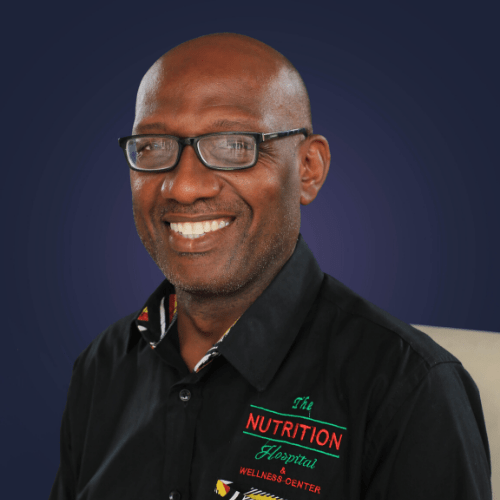
Earlier, we mentioned Dr Weston Price, who said in his book, Nutrition and Physical Degeneration, that he travelled the world in search of healthy people. He found a stark contrast between native peoples who adhered to their ancestral or traditional diets and those who had adopted the modern Western diet.
In this edition, we will explore some of the native peoples through excerpts from the book. Among the isolated Swiss people, their nutrition largely consisted of whole rye bread and a large piece of summer-made cheese, eaten with fresh milk from goats or cows. Meat was consumed about once a week.
He noted, “The sturdiness of these children permits them to play and frolic bare-headed and barefooted, even in water running down from the glacier in the late evening chilly breeze. While in such weather, my team and I wear
overcoats, gloves, and button our collars. Of all the children in the valley still using the primitive diet of whole rye and dairy products, the average number of cavities was 0.3 per cent per person.”
What does 0.3 per cent mean? If you examine one in three children between the ages of 7 and 16, you would find one minimal defective tooth in three individuals. Now contrast this with the modernised Swiss: Among children aged 8 to 15, 29.8 per cent of their teeth had already been attacked by dental caries.
Eskimos and American Indians
Next, amongst the Eskimos in Northern Canada and Alaska, he stated that the Eskimo thrived as long as he was not affected by the touch of modern civilisation. He mentioned that with the arrival of white settlers, the Eskimos and Indians quickly declined in both numbers and physical excellence due to diseases brought by the settlers. In one subgroup of Eskimos, out of 12 individuals studied, 10 had lived entirely on their native food, or practically so, and only one tooth had ever been attacked by tooth decay—a mere 0.3 per cent.
Similar findings were observed among North American Indians. Dr Price went further to examine skulls from burial sites dating back to prehistoric periods. He noted that the teeth were splendidly formed and entirely free from caries. The arches were very symmetrical, and the teeth were in their normal, regular positions.
In a ‘westernised’ settlement at Sitka, a group of Indians of various ages were studied. It was found that 36 per ceent of all their teeth had already been attacked by dental caries. Dr Price also found a well-preserved native Indian, aged 70, who had come to town from another district. His diet consisted mostly of fish, fish eggs, seaweed, and deer. His teeth were in excellent condition.
Polynesians and the Maasais
Next, among the Polynesians, some early navigators were so impressed with the beauty and health of these people that they reported the Marquesas Islands as a Garden of Eden. In the capital of Tahiti, where there was significant French influence and the natives consumed trade foods such as white flour, sugar, and canned goods, 1.9 per cent of their teeth were found to be affected by dental caries.
Dr Price also travelled to Africa. In Kenya, he visited at least 30 different tribes. He was impressed by the level of immunity in several districts and was told that practically every living native had had typhus fever and was immune.
Among the Maasai people, he noted that they were extremely physically strong and sturdy. Even among their animals, they judged the value of a cow by how quickly it stood up and ran after birth. This usually happened within a few minutes, whereas calves of modern high-production cows in civilised countries were often unable to stand for many hours, sometimes up to 24 hours. This experience reminded him of the Alaskan Eskimos, where he was told that a reindeer calf could be dropped in a foot of snow and almost immediately run fast enough to evade predators like wolves.
Among the Kikuyu tribe in Kenya, the diet mainly consisted of sweet potatoes, corn, beans, bananas, millet, and a few other foods. The women used special diets during pregnancy and lactation. Girls in this tribe were placed on a special diet for six months before marriage. They nursed their children for three harvests and followed each pregnancy with a special diet.
In a study of 33 individuals, with a total of 1,041 teeth, only 57 teeth had caries—just 5.5 per cent. Among the Maasai tribe, Dr Price noted that the men were tall and strong, usually six feet and above. He recorded some of their brilliant accumulated wisdom. For over 200 years, they had known that the malaria parasite was carried by mosquitoes. They also practised exposing members of the tribe infected with syphilis (by Arab traders) to malaria parasites, which helped prevent serious injuries from syphilitic spirochete infection. Dr Price added that modern medicine did not yet know about this great principle of using malaria to prevent or relieve syphilitic infections.
Other ethnic groups
He visited several other ethnic groups, from the Mohima in Uganda, the Watusi in the Belgian Congo, to groups in Ethiopia, Sudan, and Cairo in Egypt. His findings were consistent across these regions. Groups that remained close to their ancestral diet, which was based on accumulated wisdom, were physically healthier, stronger, more resilient, with higher immunity, and rarely fell ill. They had knowledge of how to use their environment to their best advantage. Dental caries were minimal to non-existent in such groups. However, when they switched to the Westernised diet of sugar, flour, canned goods, and other processed foods, health degeneration became evident, with dental caries, low immunity to ailments, and degenerative conditions like malaria and tuberculosis becoming common.
In summary, I ask all my readers: first, share with us the stories of your ancestors—your great-grandparents, grandparents, and parents.
Then, take time to ponder what I’ve written here. If possible, get this book and read it, along with more books written in the early 1900s or late 1800s by early travellers and missionaries.
Please, we would like to compile stories of our ancestors.
What do you remember about them?
Their activities?
Their resilience in health?
Thank you.








